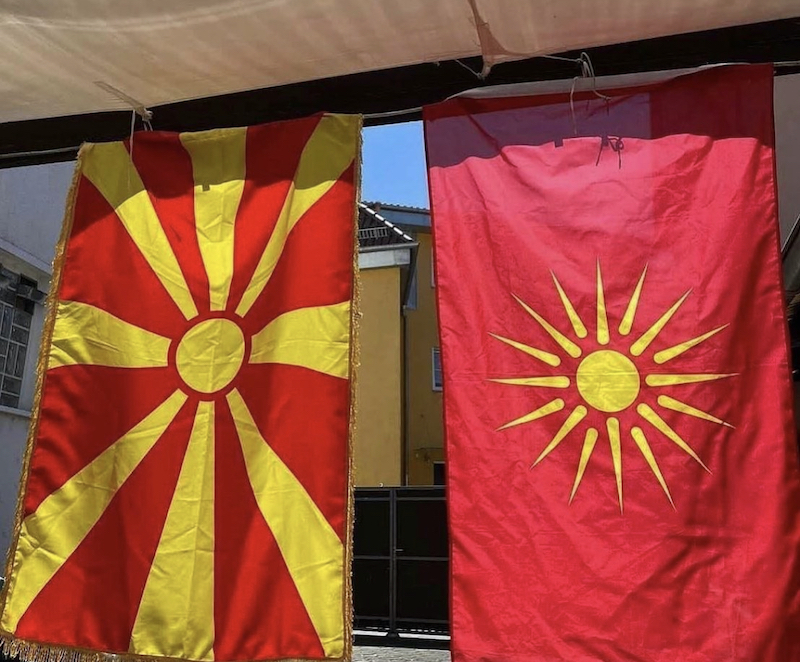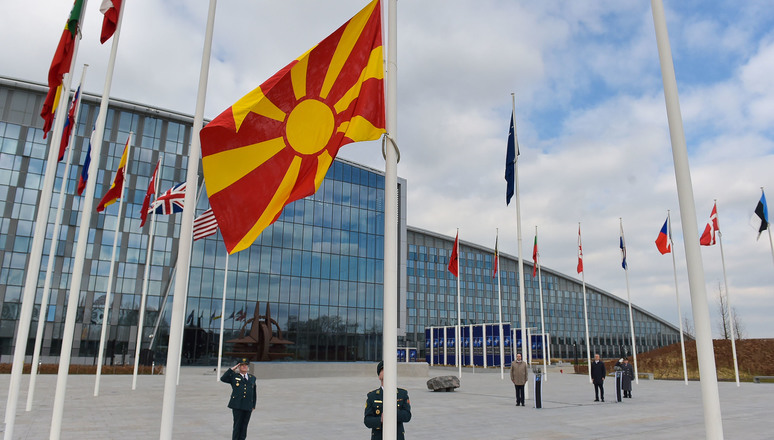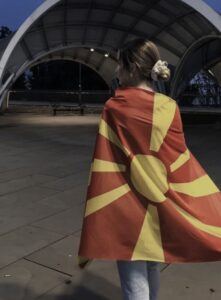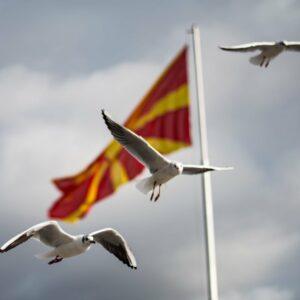The country of Macedonia has a rich history and culture dating back to ancient times.
However, it has also experienced significant political turmoil and conflict in the modern era.
One of the most visible symbols of this conflict is the existence of two different flags for Macedonia.
This article will explore the reasons behind the two flags (and their controversy) as well as shed light on the historical context that has led to it.
TLDR/Key Takeaways:
• The controversy over the two flags of Macedonia is rooted in the country’s complex political and cultural history.
• The two flags have different designs and meanings and are seen as important symbols of national identity by different groups within Macedonia.
• The controversy has had a significant impact on international relations and continues to be a source of tension within the country.

Historical Context of Macedonia
Macedonia is a country, formerly part of Yugoslavia, located in the southern-ish Balkans, with a long and complex history.
The region has been inhabited by various groups, including the ancient Macedonians, Greeks, Romans, and Ottomans.
The region’s history is marked by numerous wars, conflicts, and conquests, which have shaped its cultural and political landscape.
The modern state of Macedonia was established in 1991, following the breakup of Yugoslavia.
However, the country’s name and flag have been a source of controversy and dispute with its southern neighbor, Greece.
Greece has objected to its northern neighbor’s use of the name “Macedonia, ” arguing that it implies a territorial claim to the Greek region of the same name.
The controversy over the name “Macedonia” and the flag has been a major obstacle to the country’s integration into the international community.
The dispute has also had economic and political consequences, with Greece imposing an economic blockade on its neighbor in the mid-1990s.
Why (and When) did Macedonia Change its Name to North Macedonia?
Macedonia changed its name to North Macedonia under the 2018 Prespa Agreement with Greece, resolving a decades-long dispute over historical and cultural claims to the name “Macedonia.”
This resolution allowed North Macedonia to join international organizations like NATO and improved bilateral relations, paving the way for its European Union accession efforts.
The Two Flags of (North) Macedonia

Macedonia has had two flags in recent history, each with its own unique history and symbolism.
These flags are the “Sun of Vergina” flag and the flag of the Republic of North Macedonia.
The “Sun of Vergina” Flag of Macedonia
The “Sun of Vergina” flag, also known as the “Star of Vergina” flag, is a symbol of ancient Macedonian royalty.
The symbol is a stylized sun with sixteen rays, first discovered on a golden larnax in the tomb of Philip II of Macedon, the father of Alexander the Great.
The “Sun of Vergina” flag was adopted by the Republic of Macedonia in 1992, shortly after the country gained independence from Yugoslavia.
However, the flag was met with controversy due to its use of a symbol associated with ancient Macedonian royalty, which Greece felt was a claim to their own cultural heritage.
As a result, Greece objected to the flag and prevented Macedonia from using it in international organizations such as the United Nations.
The Flag of the Republic of North Macedonia
In 1995, the Republic of Macedonia adopted a new flag to replace the controversial “Sun of Vergina” flag.
The new flag features a red field with a golden sun with eight rays in the center.
The rays represent the “new sun of liberty” and the eight Macedonian regions.
The flag was designed by Miroslav Grčev, an architect, graphic designer and previous mayor of Centar in Skopje.
It was chosen from a national competition and is seen as a compromise between Macedonia and Greece, as it no longer uses the controversial “Sun of Vergina” symbol.
Impact on International Relations

(North) Macedonia’s flag has played a significant role in shaping its international relations.
This section will further explore the flag’s impact on the country’s relations with the European Union (EU), NATO, and its bilateral relations.
Influence on EU and NATO Relations:
North Macedonia’s government has long desired to join the EU and NATO.
The flag dispute with Greece had been a significant obstacle in achieving this goal.
However, the resolution of the dispute and the adoption of the new flag have improved the country’s relations with both organizations.
In 2020, North Macedonia became the 30th member of NATO, and the new flag was raised at the organization’s headquarters in Brussels.
The adoption of the new flag was seen as a significant step towards the country’s integration into NATO.
Similarly, the EU has welcomed North Macedonia’s efforts to resolve the flag dispute and has encouraged the country to continue its path towards EU membership.
Frequently Asked Questions
What is the history behind the two flags of Macedonia?
Macedonia has had two flags in its history. The first flag was adopted in 1992 and featured a yellow sun on a red background with eight rays emanating from it. The second flag was adopted in 1995 and is the current flag of North Macedonia. It features the same yellow sun on a red background but with only six rays. The two flags represent different periods in Macedonia’s history and have different meanings.
How did the flag of North Macedonia come to be?
The current flag of North Macedonia was designed by Miroslav Grčev and adopted on October 5, 1995. It features a stylized yellow sun on a red field, with eight broadening rays extending from the center to the edge of the field. The flag was adopted as a symbol of independence and national identity.
What is the significance of the sun on the Macedonian flag?
The sun on the Macedonian flag is known as the “Sun of Vergina” and is a symbol of the ancient Macedonian kingdom. It is also a symbol of the Macedonian people’s struggle for independence and national identity.
Why did Macedonia change its name to North Macedonia?
Macedonia changed its name to North Macedonia in 2019 as part of a deal to end a long-running dispute with Greece. Greece had objected to the use of the name “Macedonia” because it believed that it implied a territorial claim on the Greek region of the same name. The name change was necessary for North Macedonia to join NATO and the European Union.
What do the colors and symbols on the Macedonian flag represent?
The colors on the Macedonian flag are red and yellow. Red is a symbol of the Macedonian people’s struggle for freedom, while yellow represents the sun and the light of freedom. The sun on the flag is a symbol of the ancient Macedonian kingdom and the Macedonian people’s struggle for independence.
This guide was first published on February 12, 2024 and was last updated on February 13, 2024. For more information, please contact us at contact@skopjeguide.com.





